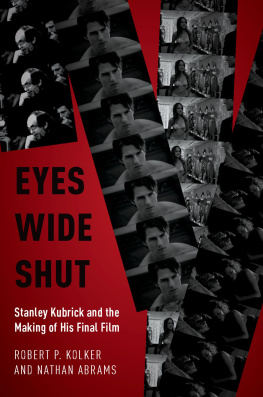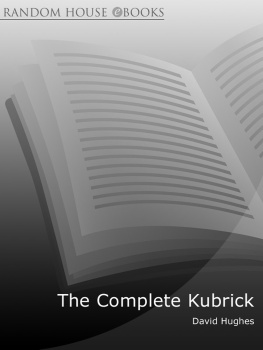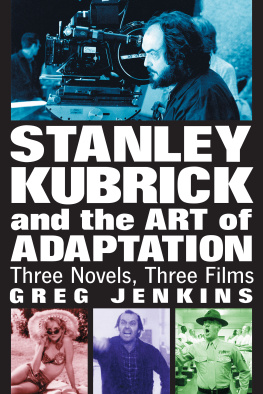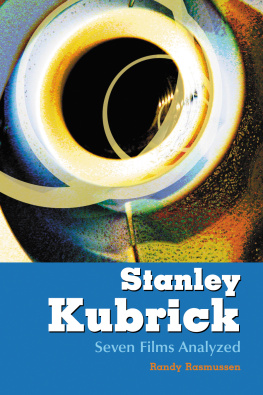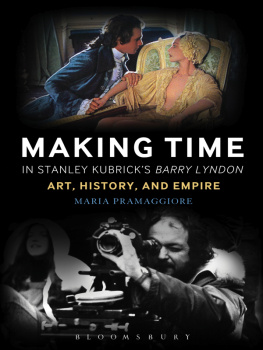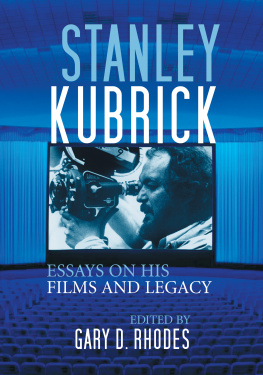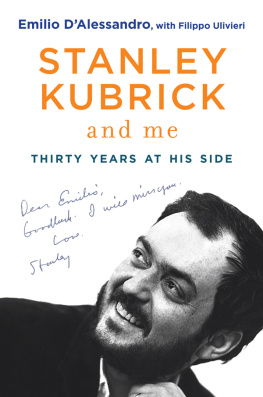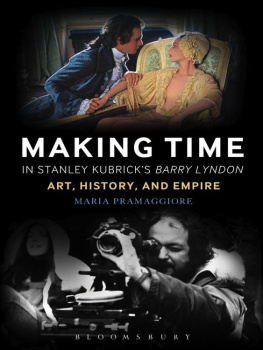Eyes Wide Shut

Oxford University Press is a department of the University of Oxford. It furthers the Universitys objective of excellence in research, scholarship, and education by publishing worldwide. Oxford is a registered trade mark of Oxford University Press in the UK and certain other countries.
Published in the United States of America by Oxford University Press
198 Madison Avenue, New York, NY 10016, United States of America.
Oxford University Press 2019
All rights reserved. No part of this publication may be reproduced, stored in a retrieval system, or transmitted, in any form or by any means, without the prior permission in writing of Oxford University Press, or as expressly permitted by law, by license, or under terms agreed with the appropriate reproduction rights organization. Inquiries concerning reproduction outside the scope of the above should be sent to the Rights Department, Oxford University Press, at the address above.
You must not circulate this work in any other form and you must impose this same condition on any acquirer.
Library of Congress Cataloging-in-Publication Data
Names: Kolker, Robert Phillip, author. | Abrams, Nathan, author.
Title: Eyes wide shut : Stanley Kubrick and the making of his final film /
Robert P. Kolker, Nathan Abrams.
Description: New York City : Oxford University Press, 2019. |
Includes bibliographical references and index. | Includes filmography.
Identifiers: LCCN 2018043518 (print) | LCCN 2018045328 (ebook) |
ISBN 9780190678043 (updf) | ISBN 9780190678050 (epub) |
ISBN 9780190678067 (oso) | ISBN 9780190678029 (cloth : alk. paper) |
ISBN 9780190678036 (pbk.: alk. paper)
Subjects: LCSH: Eyes wide shut (Motion picture) |
Kubrick, StanleyCriticism and interpretation.
Classification: LCC PN1997.E98 (ebook) | LCC PN1997.E98 K65 2019 (print) |
DDC 791.43/72dc23
LC record available at https://lccn.loc.gov/2018043518
Contents
The films of Stanley Kubrick remain alive, vital, and prescient not only in our memories, but as a strong cultural force. From Fear and Desire, Killers Kiss, The Killing, through Paths of Glory, Spartacus, Lolita, Dr. Strangelove, 2001: A Space Odyssey, A Clockwork Orange, Barry Lyndon, The Shining, and Full Metal Jacket, his films have startled us, mystified us, and continually offered sounds, images, and, most of all, visualized ideas that keep us returning to them over and over again. We cannot forget them. Our book attempts to understand the power of Kubricks work, and the man behind it, to get closer to his creative process through one film in particular, his last, Eyes Wide Shut. Though met with some scorn when it was released in 1999, just after Kubricks death, it, like so many of his films, has gained in stature over the years. There is something so typically Kubrickian and, as always with his films, uncanny about its mixture of technical virtuosity with the quotidian, even the banal, and its mysterious aura at the borderline between wake and sleep and dream, sexual longing and frustration, an action hero celebrity playing a humbled man. Though so much quieter, even reserved, than previous Kubrick films, Eyes Wide Shut is all but hypnotic with its assured rhythms and troubling, dreamlike atmosphere. It is a film deliberately made so that you cant quite get it out of your head.
Our work is an attempt to create an archeology of the film, uncovering its buried layers, to understand its evolution: its prehistory, development and production, reception and afterlife. It is based mostly on research into the records of the films production held in the Stanley Kubrick Archive at the University of the Arts in London, supplemented by other materials and interviews. We also offer a new reading of the film, a critical analysis of its key scenes and what it is about, though, given its complexity, this is always tentative and impossible to be exhaustive. But then so is archival research. While the Archive holds detailed material about all the phases of the making of the film, they are, given Kubricks working methods, not total. The Archive is, at the time of this writing, largely missing faxes, which, along with the telephone, were Kubricks favorite means of communication. But the material that is there supplies enough to allow us to extrapolate from the archival record a larger image of the work of a director whose control over his films was more complete than almost any other filmmaker one can think ofcomplete total annihilating artistic control, as Kubrick demanded early in his career.
Our research and analyses have, we hope, enabled us to see Eyes Wide Shut whole and in its parts, to understand and account for its long, long gestation, the struggle with Frederic Raphael over the screenplay, and the amazing detail of its painstaking, exhausting production, all the way through its reception and the conspiracy theories that surround it. Stanley Kubrick thought it his best film. We have tried to show why.
Robert P. Kolker
Earlysville, Virginia
Nathan Abrams
Bangor, Wales
The authors want to thank the team at the Archives & Special Collections Centre, University of the Arts, London, in particular Manager Sarah Mahurter and Senior Archivists Richard Daniels and Georgina Orgill, for their assistance in not only giving us access to Kubricks papers but in helping us to locate specific items and images and obtain permissions for them. Interviews, both in person and in print, were invaluable help in writing this book. Many people involved in the making of Eyes Wide Shut were gracious in giving us their time and thoughts. These include Jan Harlan, Kubricks executive producer (and brother-in-law) whose help made this work possible, and Kubricks wife, Christiane, whose blessing allowed us to go forth. Kubricks assistant Tony Frewin; his former producing partner, James B. Harris; artist Chris Baker; University of Maryland Professor of German Literature Peter U. Beicken; Steadicam operator Peter Cavaciuti; casting director Denise Chamian; assistant producer Brian W. Cook; actresses Victoria Eisermann, Vanessa Fenton, Abigail Good, and Ateeka Poole; Tim Everett, former Director of European Technical Operations for Warner Bros.; actor/director Todd Field; pianist Dominic Harlan; art director Lisa Leone; production designer Kira-Anne Pelican; composer Jocelyn Pook; props man Michael Wolf; Warner Bros. executive Julian Senior; choreographer Yolande Snaith; and cinematographer Larry Smith were generous with their time. There has also been correspondence with actor Tony DeSergio and Katharina Kubrick. There are names missing here, of course. We did reach out to Nicole Kidman and Tom Cruise through their representatives, but to no avail. Others wished to honor Kubricks desire for secrecy. A variety of other individuals also provided assistance along the way, including Geoffrey Cocks, Siobhan Donovan, Ian Hunter, Neil Jackson, Peter Krmer, Christopher Loki, Vinnie LoBrutto, Matt Melia, Lawrence Ratna, Filippo Ulivieri, Laurent Vachaud, Leon Vitali, David Wyatt, and the anonymous readers of our proposal and draft manuscript. Finally, we would like to thank Norm Hirschy for bringing this project to fruition after a long gestation period. The team at Oxford University Press, including Wendy Walker, Leslie Johnson, and Aishwarya Krishnamoorthy have been invaluable in the production of this book.

